Welcome to the enchanting world of Nepali cuisine, a realm where flavors blend in harmony and traditions speak through every dish. In this comprehensive guide, we delve into one of Nepal's culinary treasures: the Dal Curry. These lentil-based curries, referred to as "dal" in the community, are more than just a staple meal; they are a representation of Nepal's illustrious culinary history. Nepalese households revolve around lentils, in all their forms. Every variety of lentils adds a distinct texture and flavor to a variety of delicious curries that are both nourishing and savory. Every lentil has a narrative to tell, and every meal, from the hearty Toor Dal (pigeon peas) to the quick-cooking Masoor Dal (red lentils), sings a song of the land it originates from.
However, Nepali dal curries consist of more than just spices and lentils. They serve as an example of Nepali cuisine's creativity and simplicity. Simple ingredients like turmeric, cumin, onions, garlic, and ginger give these curries their unique flavor and depth, elevating ordinary lentils into a truly gratifying dish.
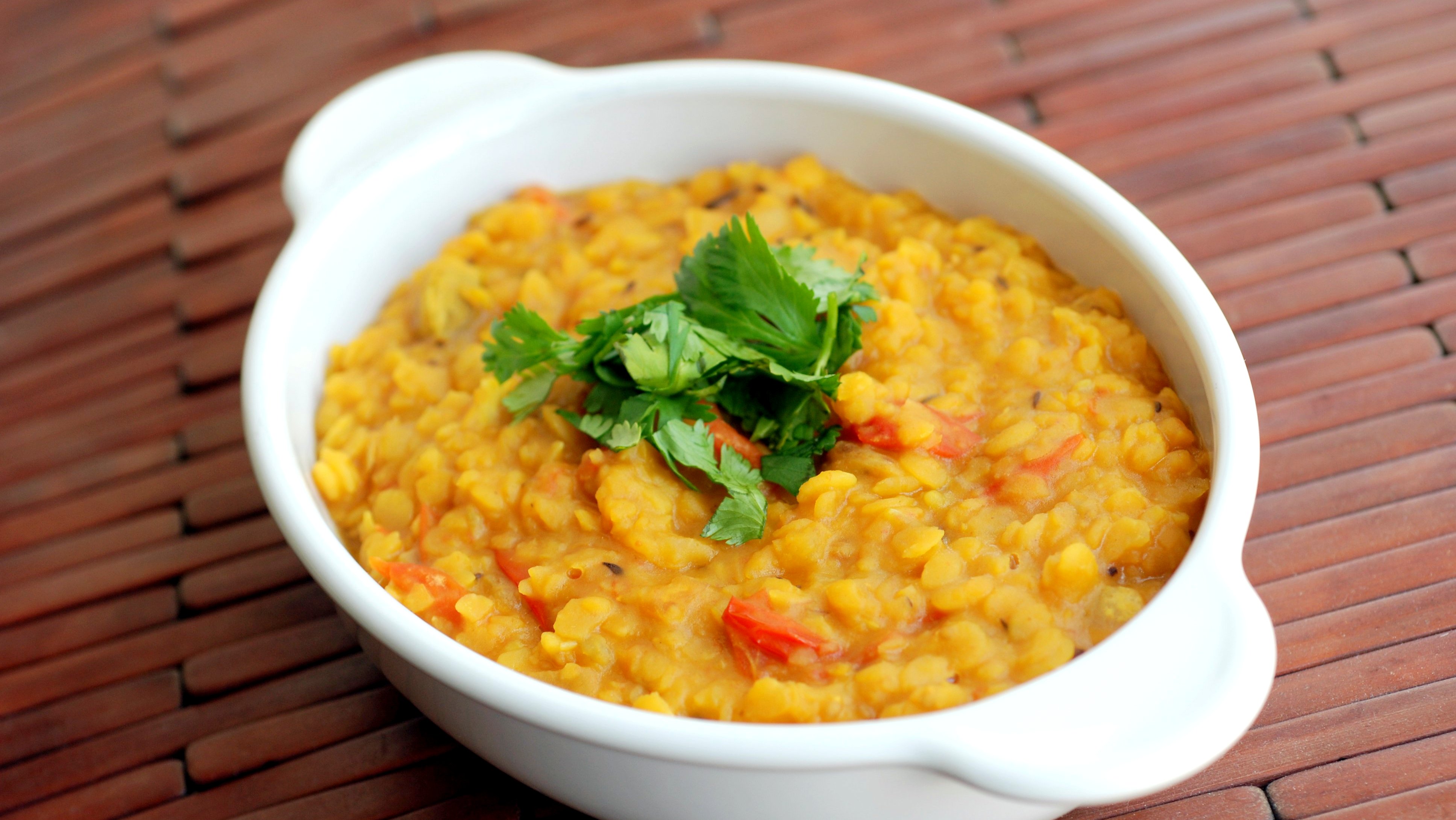
In this guide, you will learn about the different types of lentils used in Nepal, the essential ingredients that make a Nepali dal curry, and the step-by-step process of creating these flavorful dishes. Whether you are a seasoned cook or a culinary novice, these recipes will bring the taste of Nepal right into your kitchen. Join us as we explore the rich and diverse flavors of Nepali dal curries, and discover how simple ingredients can come together to create a meal that is hearty, healthy, and deeply rooted in the culinary traditions of Nepal. Let's embark on this flavorful journey together!
Understanding Lentils in Nepali Cuisine
In the heart of the Himalayas lies a rich and diverse culinary tradition, where lentils, or 'dal' as they are known in Nepal, play a pivotal role. Lentils are not just a food item in Nepal; they are a staple that weaves itself into the fabric of daily life, symbolizing both sustenance and tradition. In this section, we'll delve into the significance of lentils in Nepali cuisine, exploring the types of lentils commonly used and their unique characteristics.
A Staple of the Nepali Diet
Lentils are the cornerstone of Nepali cuisine. They are revered for their versatility and nutritional value. In a country where a large portion of the population is vegetarian, lentils provide a crucial source of protein, fiber, and essential nutrients. A typical Nepali meal, 'Dal Bhat' – literally translating to 'Lentils and Rice' – highlights the importance of lentils, showcasing them as the main dish.
Types of Lentils Commonly Used in Nepal
Nepal's culinary landscape is rich and varied, with lentils forming a significant part of its gastronomy. Among the various types of lentils used, three stand out for their unique flavors and textures, each playing a distinct role in Nepali cooking. Let's explore these lentils in more detail:
Masoor Dal (Red Lentils)
- Characteristics: Masoor dal is known for its vibrant orange-red color, which turns into a pleasing golden hue upon cooking. These lentils are small, disk-shaped, and cook relatively quickly compared to others.
- Flavor Profile: One of the reasons for its popularity is its sweet and nutty flavor. This makes masoor dal a crowd-pleaser, as it is both flavorful and comforting.
- Culinary Uses: Due to its quick-cooking nature, masoor dal is perfect for those times when you need a nutritious meal in a pinch. It's often used in soups and purees and is an excellent base for a variety of spices and herbs. In Nepal, it's commonly prepared with a simple tadka of cumin, garlic, and turmeric, allowing the natural flavors of the lentils to shine through.
Moong Dal (Yellow Lentils)
- Characteristics: Moong dal is a type of small, yellow lentil, often available split. This lentil cooks faster than many other varieties and has a soft, almost creamy texture when prepared.
- Flavor Profile: It's known for its mild, gentle flavor, which makes it a versatile ingredient in many dishes. Moong dal is particularly easy to digest, making it a favored choice for children, the elderly, and anyone with a sensitive stomach.
- Culinary Uses: In Nepali cuisine, moong dal is often used in lighter, more delicate dal recipes. It's typically cooked with minimal spices, perhaps with a hint of ginger or a sprinkle of fresh herbs, to maintain its subtle taste.
 curry.jpg)
Toor Dal (Pigeon Peas)
- Characteristics: Toor dal, or pigeon peas, are robust lentils that maintain their shape well during cooking. They have a beige exterior with a yellow interior and are available both split and whole.
- Flavor Profile: These lentils are known for their hearty, earthy flavor. They have a slightly sweet undertone that adds depth to any dish.
- Culinary Uses: Toor dal is often used in heartier, more robust dal recipes. It pairs wonderfully with stronger spices and aromatics and is a staple in many traditional Nepali households. This lentil is ideal for thicker, more substantial curries and is often cooked with vegetables or meats.
Kalo Dal (Black Gram)
- Characteristics: Kalo Dal is made from black gram lentils (urad dal), noted for their deep black skin and creamy white interior. These lentils have a rich, creamy texture when cooked, making them ideal for dishes that require a dense, velvety consistency.
- Flavor Profile: Black gram lentils are known for their earthy flavor. They have a distinct richness that becomes more pronounced when slow-cooked, perfect for absorbing a variety of spices.
- Culinary Uses: Kalo Dal is typically slow-cooked to enhance its natural flavors. It's commonly combined with spices and sometimes meat, making it a hearty and nourishing option in Nepali feasts, especially during the colder months.
 curry.jpg)
Chana Dal (Bengal Gram)
- Characteristics: Chana Dal consists of split chickpeas, known for their bright yellow color and slightly granular texture. These lentils hold their shape well during cooking, providing a pleasant bite.
- Flavor Profile: With a sweet and nutty flavor, Chana Dal is a crowd-pleaser. It's less earthy compared to other lentils, making it versatile for various spice combinations.
- Culinary Uses: Chana Dal is used extensively in stews and curries, absorbing the flavors of spices while retaining its texture. It's a popular choice in dishes where a more defined lentil shape is desired.
Rajma (Kidney Beans)
- Characteristics: Rajma, or kidney beans, are known for their large size and deep red color. They have a firm texture that softens upon cooking, offering a meaty bite.
- Flavor Profile: Kidney beans are robust in flavor with a subtle sweetness and a hearty, bean-like taste. They're ideal for absorbing rich, spicy sauces.
- Culinary Uses: Typically soaked before cooking, Rajma is a key ingredient in rich and hearty curries like Dal Makhani. It's often slow-cooked to achieve a tender, flavorful outcome, making it a favorite in Nepali cuisine.
Gahat Dal (Horse Gram)
- Characteristics: Gahat Dal, or horse gram, is a small, round, brownish lentil known for its hardy nature. It has a somewhat coarse texture that softens with prolonged cooking.
- Flavor Profile: This lentil offers a unique earthy and slightly tart flavor. It's known for its rustic taste, which is enhanced when combined with traditional spices.
- Culinary Uses: Often used in traditional Nepali soups and curries, Gahat Dal is valued for its potential medicinal properties. It's commonly cooked in dishes meant to provide warmth and nutrition, especially during cold seasons and for its supposed therapeutic benefits.
Lentils in the Context of Nepali Flavors
Each type of lentil interacts uniquely with the quintessential Nepali spices and aromatics. The choice of lentil can define the dish's texture, from smooth and creamy to hearty and substantial. Lentils in Nepal are often cooked with a medley of spices like turmeric, cumin, mustard seeds, and asafoetida, along with a base of sautéed onions, garlic, and ginger. This blend of spices and aromatics, known as 'tadka' or 'tempering,' is what gives Nepali dal its distinctive flavor profile.
The Role of Lentils in Nepali Culture
Lentils in Nepal go beyond mere sustenance. They are a part of rituals, festivals, and daily life. Dal is a dish that transcends social and economic boundaries, being a common thread in the rich tapestry of Nepal's diverse cultural fabric. Whether it's a simple weekday meal or a lavish feast during festivals like Dashain and Tihar, lentils find their place at the Nepali dining table.
Understanding lentils in Nepali cuisine is about appreciating their diversity, nutritional value, and the cultural significance they hold. Each lentil type brings its unique flavor and texture, contributing to the rich array of dal curries that are central to Nepali culinary tradition.
Key Ingredients in Nepali Dal Curries
Nepali dal curries are renowned for their depth of flavor, achieved through a harmonious blend of simple yet potent ingredients. These key ingredients not only impart distinctive tastes and aromas but also play a vital role in the overall nutritional profile of the dish. Here's a look at the essential components that make Nepali dal curries both delicious and nourishing:
Aromatic Base
- Onions: Often finely chopped, onions provide a sweet and savory foundation to dal curries.
- Garlic: Crushed or minced, garlic adds a pungent depth of flavor, essential in most Nepali dal recipes.
- Ginger: Fresh ginger, grated or minced, introduces a warm, slightly spicy note.
Essential Spices
- Turmeric: A staple in Nepali cooking, turmeric imparts a beautiful golden color and a subtle earthy flavor, along with its well-known anti-inflammatory properties.
- Cumin Seeds: These are frequently used in the tempering process, adding a warm, slightly bitter taste.
- Mustard Seeds: Often used in tadka (tempering), mustard seeds add a pungent and slightly nutty flavor.
- Coriander Powder: With its citrusy, floral notes, coriander powder is a common addition to enhance the flavor.
- Garam Masala: A blend of ground spices, garam masala is typically added towards the end of cooking to add warmth and complexity.
Fresh Herbs
- Cilantro (Coriander Leaves): Fresh cilantro is generously used as a garnish, adding a fresh, citrusy note to the dish.
- Fenugreek Leaves: These may be used in some regional variations, offering a slightly bitter and aromatic quality.
Fats for Cooking
- Ghee (Clarified Butter): Ghee is preferred for its rich flavor and is often used in tadka. It's also considered healthy in Ayurvedic traditions.
- Vegetable Oil: A more neutral option, vegetable oil is commonly used for frying spices and aromatics.
Additional Flavorings
- Tomatoes: Fresh or canned, tomatoes add acidity and sweetness, balancing the earthy flavors of the lentils and spices.
- Chili Peppers: Green or red chilies, fresh or dried, are used to adjust the heat level according to preference.
- Asafoetida (Hing): A pinch of asafoetida in the tadka imparts a unique onion-garlic flavor, especially important in Jain and Brahmin cooking where onion and garlic are often avoided.
Acidic Elements
- Lemon Juice: A splash of lemon juice can be added at the end to brighten up the dish.
- Tamarind: In some regional variations, tamarind is used for its sourness and depth.
The art of making Nepali dal lies in how these ingredients are layered and cooked together. The process of tempering (tadka) is particularly crucial, as it involves frying the spices and aromatics to release their essential oils, thereby infusing the dal with a rich, complex flavor profile. In the following sections, we'll explore the cooking process of Nepali dal curries, guiding you through the steps to create these delightful dishes in your kitchen.
Step-by-Step Cooking Process for Nepali Dal Curries
Cooking a Nepali dal curry is an art that combines simplicity with flavor. While the process can vary slightly depending on the type of dal and regional preferences, the basic steps remain consistent. Here's a step-by-step guide to creating an authentic Nepali dal curry:
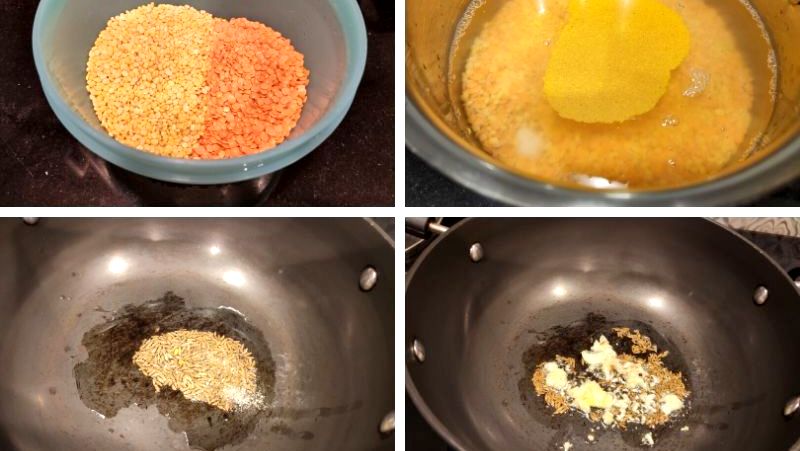
Preparing the Lentils
- Rinse the Lentils: Begin by thoroughly rinsing your choice of lentils (Masoor, Moong, or Toor Dal) under cold water. This step is crucial to remove any dirt or impurities.
- Boil the Lentils: In a large pot, add the rinsed lentils and pour in enough water to cover them. You can add a pinch of turmeric and salt to the water for extra flavor. Bring to a boil, then reduce the heat to a simmer. Cook until the lentils are tender, which may take anywhere from 15 to 30 minutes, depending on the type of dal.
Preparing the Tadka (Tempering)
- Heat the Fat: In a separate pan, heat ghee or oil over medium heat. Ghee is traditional and adds a rich flavor, but oil works well for a vegan option.
- Add Mustard and Cumin Seeds: Once the fat is hot, add mustard seeds and cumin seeds. Wait until they start to sputter.
- Sauté Aromatics: Add finely chopped onions, minced garlic, and grated ginger. Sauté until the onions turn translucent and the mixture is fragrant.
- Incorporate Spices: Add turmeric, coriander powder, and asafoetida (if using). If you like it spicy, add chopped green or red chilies.
- Add Tomatoes: If the recipe calls for tomatoes, add them now and cook until they soften and blend into the mixture.
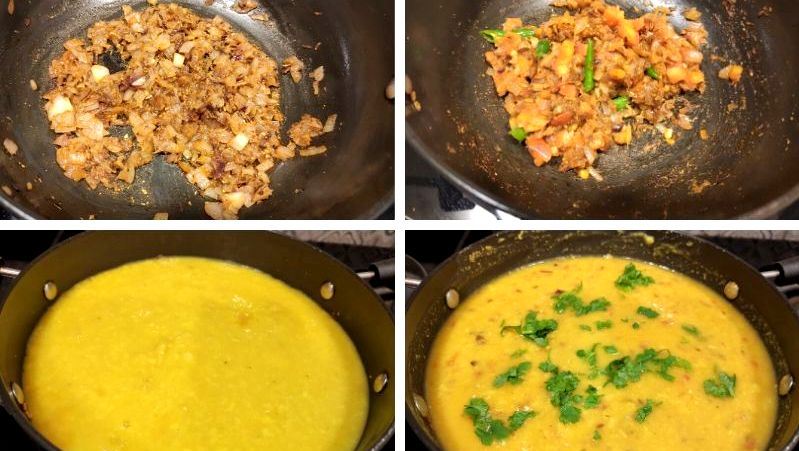
Combining and Simmering
- Combine Lentils and Tadka: Once the lentils are cooked and the tadka is ready, pour the tadka over the lentils. Alternatively, you can add the cooked lentils to the pan with the tadka.
- Simmer: Let the dal simmer for a few minutes to allow the flavors to meld. If the dal is too thick, you can add some water to reach your desired consistency.
- Season: Taste and adjust the seasoning. Add salt as needed, and if you prefer a tangy flavor, a squeeze of lemon juice or a bit of tamarind paste can be added at this stage.
- Garnish: Finally, garnish with freshly chopped cilantro for a burst of color and freshness.
Serving
- Serve Hot: Nepali dal is traditionally served hot. It's commonly served over steamed rice as part of a Dal Bhat meal but can also be enjoyed with roti or naan.
Variations and Tips
- Dal Fry Variation: For a Dal Fry, the cooked lentils are added to the tadka and then fried together for a few minutes.
- Consistency: The consistency of Nepali dal can vary from a thin soup-like consistency to a thicker stew. Adjust the amount of water based on your preference.
- Slow Cooking: For an even richer flavor, consider simmering the dal on low heat for a longer period.
Cooking Nepali dal curries is a fulfilling experience, rich in flavors and aromas. Each step in the process contributes to creating a dish that is not just nourishing but also a true representation of Nepal's culinary heritage. Enjoy the process and the delightful meal that follows!
Popular Variations of Nepali Dal Curries
Nepali dal curries, with their rich flavors and comforting textures, come in various forms and styles. Each variation reflects the diversity of Nepal's regional cuisines and cultural influences. Here, we explore some of the popular variations of Nepali dal curries that are beloved both in Nepal and around the world.
Dal Fry
- Description: Dal Fry is a popular variation where the cooked lentils are given a vigorous tadka or tempering with spices and aromatics. This process imparts a rich and robust flavor to the dish.
- Preparation: It typically involves frying onions, tomatoes, ginger, garlic, and a blend of spices like cumin, mustard seeds, and asafoetida in ghee or oil. The cooked lentils are then added to this mixture and fried together, allowing the flavors to infuse into the lentils.
- Serving: Dal Fry is often garnished with fresh cilantro and served with rice or flatbreads like roti or naan.
Dal Makhani
- Description: Originating from Punjab but beloved in Nepal, Dal Makhani is a rich and creamy dal made with black lentils (urad dal) and kidney beans (rajma).
- Preparation: The lentils and beans are slow-cooked and then simmered in a rich tomato-based sauce with butter and cream, along with spices like garam masala, cumin, and coriander.
- Serving: It's usually garnished with a dollop of cream or butter and served with rice or naan.
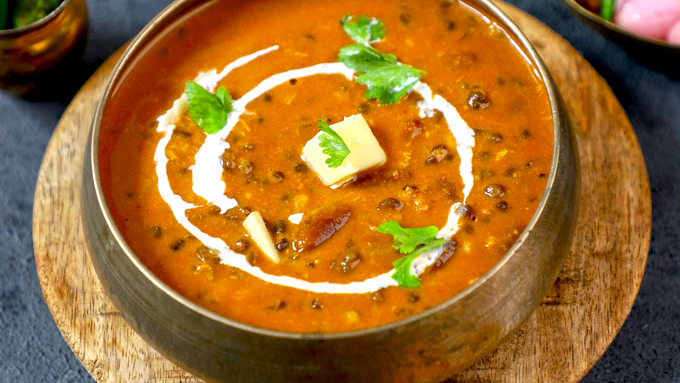
Tarkari Dal
- Description: Tarkari Dal is a Nepali-style vegetable lentil soup where vegetables are cooked along with the lentils.
- Preparation: Common vegetables include spinach, cauliflower, green beans, or pumpkin. These are added to the cooked lentils along with a flavorful tadka and simmered until everything is tender and flavorful.
- Serving: It's a nourishing one-pot meal, often enjoyed with rice or as a soup.
Green Moong Dal
- Description: This variation uses whole green moong beans, which offer a slightly different texture and taste compared to the yellow split moong dal.
- Preparation: The whole moong beans are soaked, then cooked until tender, and seasoned with a hearty tadka of spices and aromatics.
- Serving: Green Moong Dal is typically thicker and served with rice or flatbreads.
Panchratna Dal
- Description: Meaning 'five jewels,' Panchratna Dal is a mix of five different types of lentils, offering a unique blend of flavors and textures.
- Preparation: The lentils are cooked together and then seasoned with a rich tadka. This dal is known for its complex flavors and nutritional value.
- Serving: It's often enjoyed with rice or naan, making for a wholesome and hearty meal.
Each of these variations showcases the versatility of lentils in Nepali cuisine. Whether you prefer the creamy richness of Dal Makhani or the wholesome simplicity of Tarkari Dal, there's a Nepali dal curry to suit every palate. Experimenting with these different styles can bring a taste of Nepal's rich culinary heritage to your kitchen.
Serving and Pairing Suggestions for Nepali Dal Curries
Nepali dal curries, with their rich flavors and comforting warmth, are incredibly versatile and can be served in various ways. Whether you're enjoying a simple family dinner or hosting a special meal, there are numerous ways to serve and pair these delightful curries. Here are some suggestions:
Traditional Nepali Style: Dal Bhat
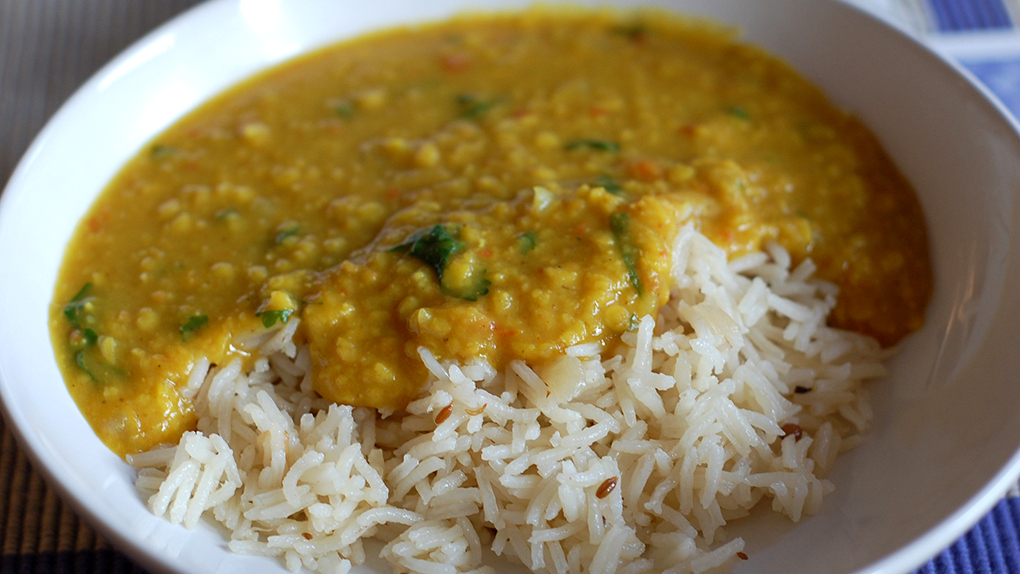
- Description: Dal Bhat, a traditional Nepali meal, consists of lentil curry served with steamed rice (bhat). It's a staple in Nepal and provides a balanced combination of carbs, protein, and nutrients.
- Pairing: Alongside the dal and rice, it's common to include a side of vegetable curry (tarkari), pickles (achar), and sometimes meat or fish dishes. This creates a complete and satisfying meal.
With Indian Breads
- Flatbreads: Nepali dal curries pair wonderfully with various Indian breads like roti, naan, or paratha. The bread can be used to scoop up the dal, making for a hearty and fulfilling meal.
- Stuffed Breads: For a more indulgent meal, serve with stuffed breads like Aloo Paratha (potato-stuffed bread) or Paneer Paratha (cheese-stuffed bread).
As a Soup
- Light Meal: Some dal curries, especially those made with yellow or green lentils, can be served as a soup. This is a great option for a lighter meal or a starter course.
- Accompaniments: Pair with crusty bread or a light salad for a complete meal.
With Side Dishes
- Vegetables: A side of sautéed or roasted vegetables complements the dal's richness. Popular choices include cauliflower, spinach, or mixed vegetables.
- Meat Dishes: For non-vegetarians, grilled or roasted chicken, lamb, or fish make excellent pairings with dal curries.
Toppings and Garnishes
- Fresh Herbs: Garnish with fresh cilantro or fenugreek leaves for a burst of freshness.
- Lemon or Lime Wedges: Serving with a side of lemon or lime wedges allows guests to add a tangy zest to their dal.
- Yogurt: A dollop of yogurt on top of the dal can add a cooling contrast to the spices.
With Rice Varieties
- Fragrant Rice: Basmati or Jasmine rice, known for their fragrance and flavor, pair exceptionally well with dal curries.
- Brown Rice: For a healthier option, serve with brown rice, which adds a nutty flavor and extra fiber.
Fusion Pairings
- Global Cuisines: Get creative by pairing dal with elements from other cuisines, such as serving it with pita bread, over a bed of quinoa, or alongside a Mediterranean salad.
The beauty of Nepali dal curries lies in their adaptability to different tastes and dietary preferences. Whether served as part of a traditional meal or integrated into a fusion dish, dal curries are sure to delight the palate with their comforting and wholesome flavors.
Health Benefits of Lentils
Lentils are not just a staple in Nepali cuisine; they are also a powerhouse of nutrition, offering a multitude of health benefits. Rich in protein, fiber, and various essential nutrients, lentils are an excellent addition to any diet. Here are some key health benefits of including lentils in your meals:
High in Plant-Based Protein
- Muscle Building: Lentils are an excellent source of plant-based protein, making them a vital food choice for vegetarians and vegans. They provide the essential amino acids needed for muscle repair and growth.
- Satiety and Weight Management: The high protein content in lentils can also help in feeling fuller for longer, aiding in weight management.
Rich in Dietary Fiber
- Digestive Health: Lentils are high in both soluble and insoluble fiber. Soluble fiber helps in digestion and can reduce the risk of digestive ailments like constipation, while insoluble fiber aids in gut health.
- Blood Sugar Control: The fiber in lentils can also help stabilize blood sugar levels, making them a good choice for people with diabetes or those looking to manage their blood sugar.
Packed with Essential Nutrients
- Iron: Lentils are a good source of iron, which is crucial for maintaining energy levels and overall health, especially important for people following a plant-based diet.
- Folate: They are also rich in folate (vitamin B9), essential for DNA synthesis and repair, and crucial during pregnancy for fetal development.
- Magnesium and Potassium: These minerals, found in lentils, are important for heart health, nerve function, and maintaining a healthy blood pressure.
Good for Heart Health
- Cholesterol Reduction: The high fiber content in lentils can help lower cholesterol levels, reducing the risk of heart disease.
- Healthy Blood Vessels: Some studies suggest that lentils can improve the overall health of blood vessels, further contributing to heart health.
Low in Calories and Fat
- Weight Loss Friendly: Lentils are low in calories and virtually fat-free, making them an excellent choice for those looking to lose weight or maintain a healthy weight.
Antioxidant Properties
- Fights Free Radicals: Lentils contain antioxidants like vitamin E and selenium, which help combat free radicals in the body, potentially reducing the risk of chronic diseases.
Gluten-Free
- Suitable for Gluten Intolerance: For those with celiac disease or gluten sensitivity, lentils are a nutritious, gluten-free alternative to grains.
Versatility in Diet
- Easy to Incorporate: Lentils can be easily incorporated into various dishes, from soups and salads to curries and stews, making them a versatile ingredient in healthy cooking.
Incorporating lentils into your diet not only allows you to enjoy delicious and diverse dishes but also contributes significantly to your overall health and well-being. Their nutritional profile makes them a valuable ingredient in any kitchen, especially for those looking for healthy, plant-based meal options.
Nepali dal curries are not just a testament to the rich and diverse culinary traditions of Nepal, but they also offer a wholesome and nutritious option for a variety of diets. The different types of lentils used in these curries, each with their unique flavor and texture, combined with a symphony of spices and herbs, create dishes that are both comforting and flavorful. Whether served traditionally with rice or bread, as a hearty soup, or in innovative fusion dishes, Nepali dal curries cater to a wide range of palates. Beyond their delicious taste, the health benefits of lentils, including their high protein, fiber, and nutrient content, make these curries a smart choice for those seeking a healthy, balanced diet. Embracing the art of making Nepali dal curries is not just about enjoying a meal; it's about nourishing both the body and soul with the simplicity and richness of one of Nepal's most cherished culinary staples.
Are you inspired to dive deeper into the world of Nepali dal curries and broaden your culinary skills? Whether you're a beginner eager to learn the basics or a seasoned cook looking to explore new flavors, the Kathmandu Cooking Academy offers a range of classes that cater to your needs. In the heart of Nepal, immerse yourself in hands-on cooking experiences where you'll learn not just about the techniques but also the rich cultural stories behind each dish. Don't miss this opportunity to transform the way you cook and perceive Nepali cuisine. Visit the Kathmandu Cooking Academy's website to enroll in a class that suits your schedule and culinary interests. Embrace this journey to mastering the art of Nepali dal curries and bring a piece of Nepali culinary heritage into your kitchen!

